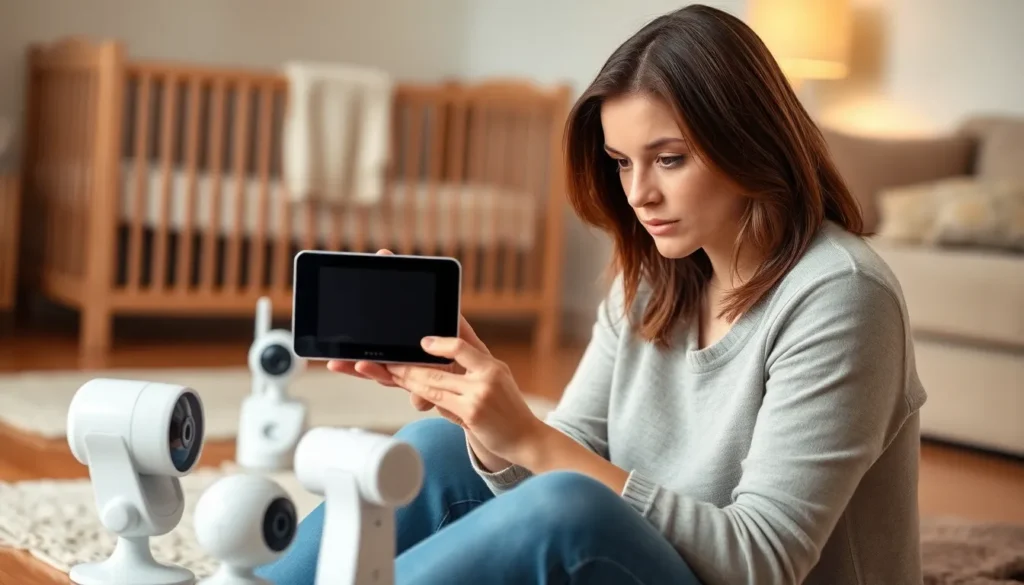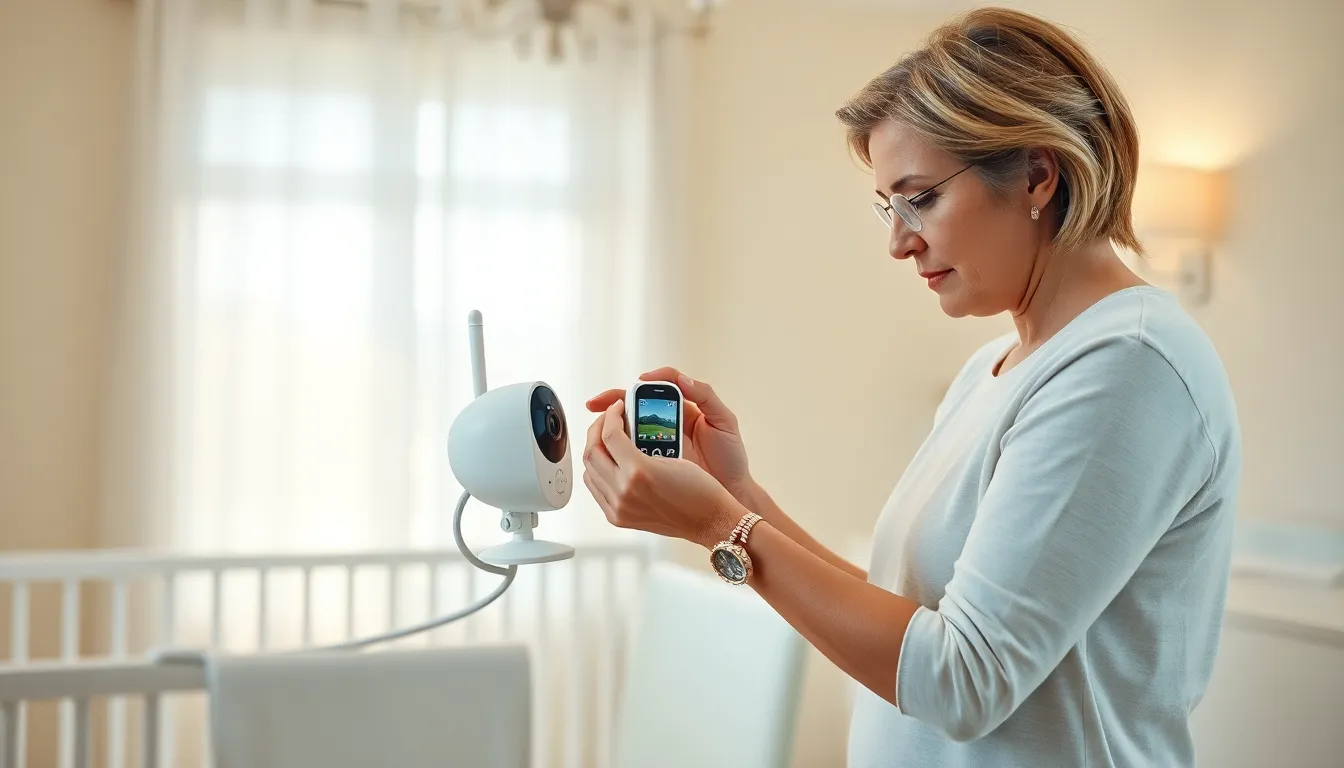Setting up a baby monitor might seem like a simple task, but it can feel more complex than assembling a piece of IKEA furniture without instructions. With countless options out there, from high-tech video monitors to classic audio ones, parents often find themselves scratching their heads. After all, who knew keeping an eye on a sleeping baby could require a degree in engineering?
Table of Contents
ToggleUnderstanding Baby Monitor Setup
Setting up a baby monitor requires understanding different types and features. Parents can enhance their monitoring experience by selecting the right options.
Types of Baby Monitors
Audio monitors transmit sound only. They offer a straightforward approach for parents who primarily need to hear their baby. Video monitors provide visual support, allowing parents to see their baby in real-time. Smart monitors connect to Wi-Fi, enabling monitoring through smartphones and tablets. Some devices include movement detection sensors for added security. Parents may also find wearables or under-mattress monitors that track baby’s movement and breathing. Choosing the right monitor depends on personal preference and specific needs.
Key Features to Consider
Audio quality plays a crucial role in selecting a baby monitor. Clear sound transmission ensures parents can hear their baby without distortion. Video clarity significantly impacts the user experience; high-definition images provide better monitoring. Night vision is essential for low-light environments. Battery life matters, especially during long nights. Range is vital, ensuring a reliable connection throughout the home. Additional features, such as two-way communication, temperature sensors, and lullabies, enhance the functionality of the monitor. Prioritizing these aspects will help parents make informed decisions.
Preparing for Baby Monitor Setup
Effective baby monitor setup starts with careful planning. Parents must consider their environment and specific needs to ensure a smooth experience.
Choosing the Right Location
Placement of the baby monitor influences its effectiveness. Position the monitor near the crib for optimal audio and video capture. Keep it away from any potential hazards, such as cords or toys, to ensure safety. Consider avoiding walls, windows, and obstructions that can interfere with the signal. Placing the device high helps provide a better field of view, especially for video monitors. Testing the monitor’s range before finalizing the location confirms that it connects properly to the receiver.
Safety Considerations
Safety remains paramount during setup. Ensure the monitor’s power cords remain out of reach to prevent strangulation hazards. Using wireless models helps eliminate trip hazards associated with cords. Secure the device firmly to avoid accidental falls or movements. Verify that all equipment adheres to safety standards to protect the baby from potential risks. Setting up a baby monitor in a well-ventilated area also enhances safety and functionality.
Step-by-Step Guide to Baby Monitor Setup
Setting up a baby monitor requires attention to detail. Several steps will ensure an efficient and effective setup for monitoring.
Setting Up the Monitor
Begin by selecting a suitable location for the monitor. Position it near the crib while keeping cords and other hazards away from the baby. Check that the monitor’s camera angle covers the entire crib area. Ensure the device is stable and securely mounted if using wall brackets. Plug the monitor into an accessible outlet, avoiding areas congested with toys or other items. Lastly, test the monitor to confirm it captures sound and video clearly.
Connecting to Wi-Fi
Connecting the baby monitor to Wi-Fi enhances its features. Start by following the manufacturer’s instructions for network setup. Locate the settings menu in the monitor’s app and choose the Wi-Fi option. Select the home network and input the password. Check that the monitor has a stable internet connection, indicated by a signal strength icon. Utilize any troubleshooting tips provided in the user manual if connectivity issues arise. Confirm successful connection by testing the monitor’s remote features.
Troubleshooting Common Issues
Parents often encounter a range of issues when using baby monitors. Addressing these problems efficiently enhances overall functionality.
Connectivity Problems
Connectivity problems can disrupt monitoring. First, ensure the monitor is within range of the Wi-Fi router. Next, check for any interference from devices like microwaves or Bluetooth speakers. Restarting the monitor and router often resolves temporary glitches. If the app crashes or fails to connect, reinstalling it may solve the issue. Firmware updates also improve connectivity performance, so checking for any available updates is crucial.
Video or Audio Quality Issues
Video or audio quality issues can lead to missed sounds or unclear visuals. Clarify the camera’s position relative to the crib; excessive distance may reduce clarity. Adjust the angle to avoid obstructions that block the line of sight. Ensuring the monitor’s lens is clean can also help enhance visual quality. For audio issues, check the volume settings and confirm the microphone isn’t muted. Testing in different rooms may reveal if the home layout affects sound quality. If problems persist, considering a device exchange with superior specifications can improve the experience.
Conclusion
Setting up a baby monitor can be a daunting task but it’s essential for peace of mind. By understanding the various types of monitors and their features parents can choose the best option for their needs. Proper placement and safety precautions are crucial for effective monitoring.
Testing the monitor’s functionality and connectivity ensures it operates smoothly when needed most. With the right setup parents can confidently keep an eye on their little ones while enjoying some well-deserved rest. Taking the time to get it right pays off in the long run, making the parenting journey a bit easier.





